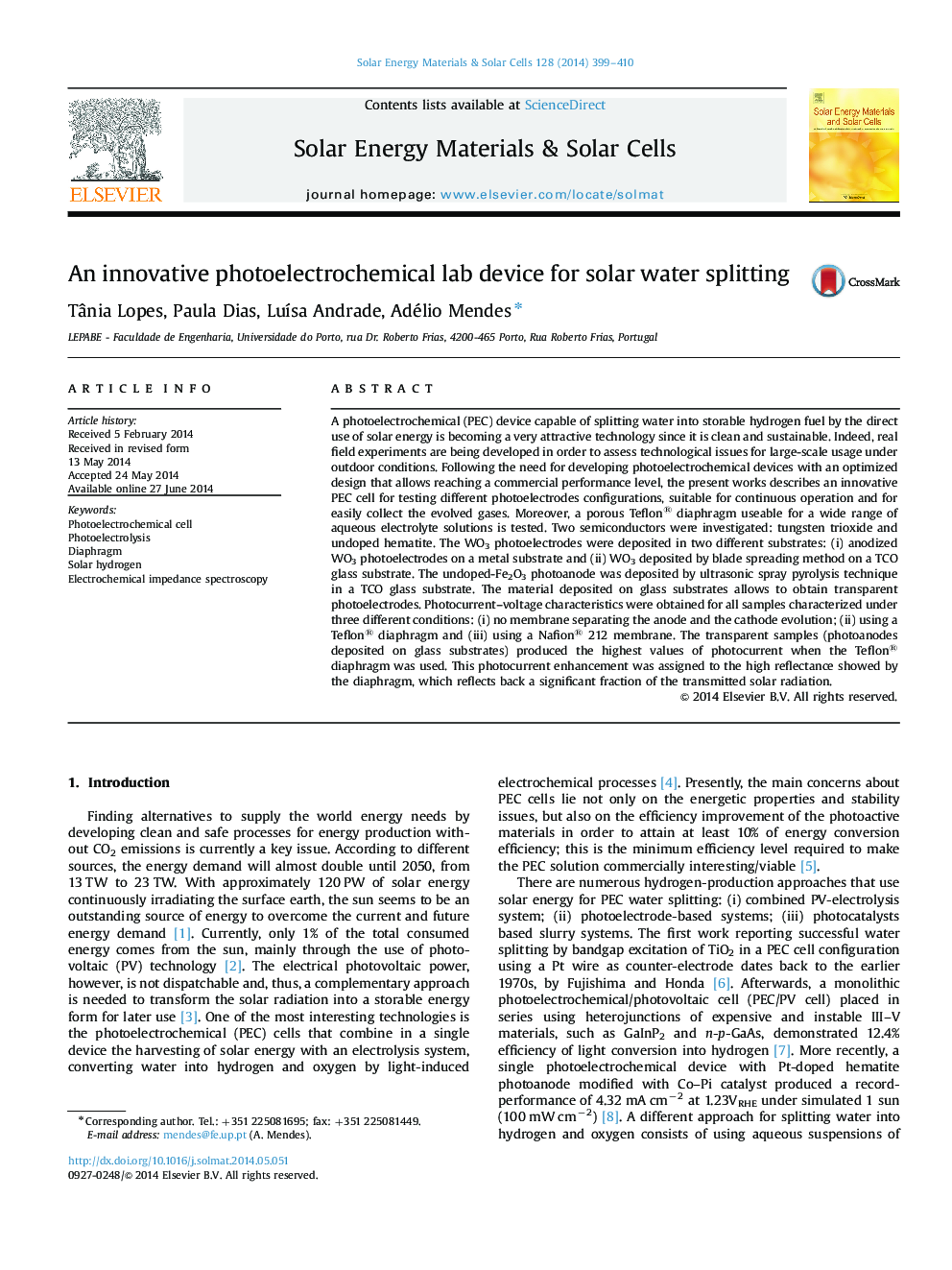| کد مقاله | کد نشریه | سال انتشار | مقاله انگلیسی | نسخه تمام متن |
|---|---|---|---|---|
| 78016 | 49312 | 2014 | 12 صفحه PDF | دانلود رایگان |
• A new and versatile lab scale PEC cell reactor is disclosed.
• This reactor meet special demands to test the water photo-splitting reaction.
• A new and versatile membrane is also proposed and tested in the new PEC cell.
• This technology is now being used by the most important PEC research groups.
• This new cell is a pre-prototype version being now improved to be commercialized.
A photoelectrochemical (PEC) device capable of splitting water into storable hydrogen fuel by the direct use of solar energy is becoming a very attractive technology since it is clean and sustainable. Indeed, real field experiments are being developed in order to assess technological issues for large-scale usage under outdoor conditions. Following the need for developing photoelectrochemical devices with an optimized design that allows reaching a commercial performance level, the present works describes an innovative PEC cell for testing different photoelectrodes configurations, suitable for continuous operation and for easily collect the evolved gases. Moreover, a porous Teflon® diaphragm useable for a wide range of aqueous electrolyte solutions is tested. Two semiconductors were investigated: tungsten trioxide and undoped hematite. The WO3 photoelectrodes were deposited in two different substrates: (i) anodized WO3 photoelectrodes on a metal substrate and (ii) WO3 deposited by blade spreading method on a TCO glass substrate. The undoped-Fe2O3 photoanode was deposited by ultrasonic spray pyrolysis technique in a TCO glass substrate. The material deposited on glass substrates allows to obtain transparent photoelectrodes. Photocurrent–voltage characteristics were obtained for all samples characterized under three different conditions: (i) no membrane separating the anode and the cathode evolution; (ii) using a Teflon® diaphragm and (iii) using a Nafion® 212 membrane. The transparent samples (photoanodes deposited on glass substrates) produced the highest values of photocurrent when the Teflon® diaphragm was used. This photocurrent enhancement was assigned to the high reflectance showed by the diaphragm, which reflects back a significant fraction of the transmitted solar radiation.
Journal: Solar Energy Materials and Solar Cells - Volume 128, September 2014, Pages 399–410
